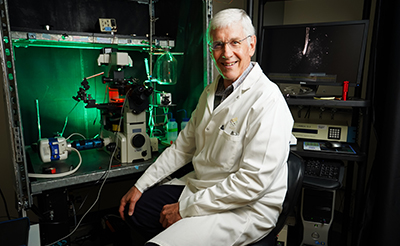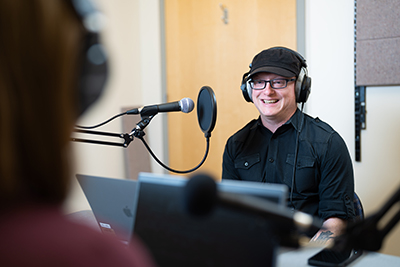The Oregon Institute of Occupational Health Sciences is dedicated to conducting research that advances our scientific understanding of factors that affect worker safety, health, and well-being. Our faculty conducts basic, clinical, and applied research, laying the foundations for advancements in worker safety and well-being across academia and industry sectors.
Basic research is the systematic study directed toward greater knowledge or understanding of the fundamental aspects of phenomena. Applied research is designed to solve practical problems. Clinical research, meanwhile, embraces a continuum of studies involving interactions with patients, diagnostic clinical materials or data, or populations.
Our research is often predicated on partnerships with other researchers, community groups, and non-profit, public, and private organizations. With the support of organizations including the Oregon Occupational Safety and Health Administration, the National Institute for Occupational Safety and Health, the National Institutes of Health, we conduct research that aims to improve worker health, safety, and well-being in Oregon and beyond.
Research for a healthier, safer workforce

Mistimed eating: understanding the implications for reproductive health
A new five-year, $2.7M NIH grant led by Dr. Matthew Butler will improve our understanding of how flipped sleeping and eating schedules impact behaviors and hormonal signaling critical to reproductive health.

Shiftwork in firefighters
In this study, Dr. Nicole Bowles aims to empower firefighters and other emergency service personnel to use an evidence-based approach when considering a work design that most benefits the mental and physical health of firefighters.

Addressing emotional exhaustion in primary care clinics
Dr. David Hurtado and colleagues are developing and testing protocols to assess the efficacy of supervisor/employee “check-ins" to reduce emotional exhaustion in primary care settings.

Research themes
Our collaborative, multidisciplinary approach to research encompasses a range of areas relevant to occupational health, safety, and well-being. Researchers at the Institute examine the mechanics of sleep and circadian health, the health impacts of exposure to toxins, pollutants, and environmental stressors at the workplace, supportive workplace practices that promote physical and mental health, and workplace injuries and fatalities.

Research labs
Our faculty labs are hubs for discoveries and innovations that propel our knowledge of the factors that support worker health, safety, and well-being.
Research internships
Our internship program is designed to introduce undergraduate students to occupational health and biomedical research. We provide unique research opportunities in basic and applied research areas.
Participate in a study
Our researchers lead a variety of clinical and applied studies focused on factors that impact occupational health, safety, and well-being.
Learn more about our work

Newsletter
Explore professional development opportunities, the latest updates from the Oregon Healthy Workforce Center and the Occupational Public Health Program, a research snapshot, and upcoming occupational health-focused events.

Blog
The Oregon and the Workplace Blog features the latest from OccHealthSci research, professional development opportunities, and valuable insights from disciplines associated with occupational health, safety, and well-being.

Podcast
The What's Work Got to Do with It podcast, produced by OccHealthSci, brings together occupational health, safety, and well-being experts to discuss the latest topics relating to worker health, well-being, and safety in Oregon and beyond.